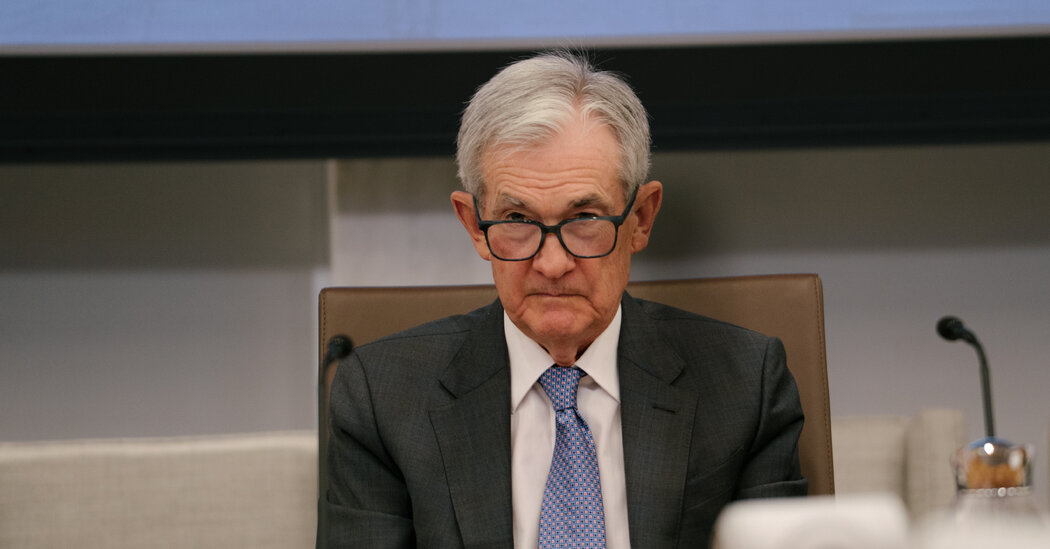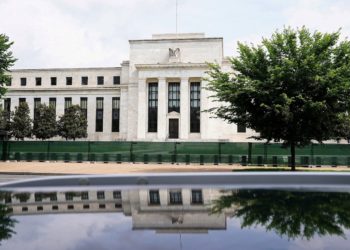The Federal Reserve is expected to lower interest rates on Wednesday by a quarter of a percentage point for the second meeting in a row.
The decision reflects the central bank’s view that it can afford the risk of temporarily higher inflation in order to support the labor market from weakening too much. That strategy is a precarious one and depends in large part on price pressures stemming from President Trump’s tariffs fading over time and the economy continuing to lose momentum rather then stabilize at current levels.
The stakes are high. Depending on how much the Fed cuts interest rates from here, it could either inadvertently fuel inflation or cause undue harm to the labor market. As Jerome H. Powell, the chair, has repeatedly put it, there is “no risk-free path.”
This dilemma has spawned a range of views inside the Fed about how to proceed, a debate that has become all the more complicated now that the government shutdown has made it far more difficult for officials to know how the economy is actually faring.
On Wednesday, the Fed will release a new policy statement alongside its rate decision at 2 p.m. in Washington. Mr. Powell will hold a news conference at 2:30 p.m.
Here is what to watch for:
Queuing up a December cut?
In September, most officials at the Fed predicted quarter-point interest rates cuts at the two remaining meetings of the year, in October and December. With the October reduction now all but guaranteed, attention has shifted to whether the central bank will follow through with what policymakers forecast.
Mr. Powell is unlikely to send too strong a signal about December and reiterate that each decision will be made meeting by meeting.
Typically, the Fed cues off the incoming official data to help justify its interest-rate decisions, while also citing alternative metrics and surveys about economic activity. But the shutdown has effectively created a data blackout for the Fed, at least from government sources. The Bureau of Labor Statistics released September’s Consumer Price Index report over a week late on Friday in order to meet a deadline for Social Security cost-of-living adjustments. But that is likely to be the last major data release from the agency for a while.
The White House recently warned that the October C.P.I. report may not be published because data is not being collected given the shutdown. September’s job report and all subsequent monthly releases have also been indefinitely delayed.
Based on the metrics the Fed does have in hand, which include regional surveys, weekly unemployment claims and data from private sources, Mr. Powell on Wednesday is likely to continue to emphasize that the labor market is vulnerable and that inflationary pressures tied to tariffs are not as bad as once feared. The government shutdown itself represents a new risk to the economy, with federal workers now without pay, and access to food subsidies and other government assistance programs days away from being cut off.
Taken together, that suggests the Fed is comfortable continuing to lower interest rates until it gets closer to a “neutral” level that does not stimulate growth but does not deter it, either.
A lone dissent?
For the third meeting in a row, the Fed’s vote on interest rates is unlikely to be unanimous. In July, two members of the Board of Governors — Michelle W. Bowman and Christopher J. Waller — opposed the central bank’s decision to stand pat instead of cutting borrowing costs by a quarter of a percentage point.
Just a day after being confirmed to join the Fed in September, Stephen I. Miran became the sole policymaker to officially vote against the central bank’s quarter-point cut. Instead, Mr. Trump’s pick to join the central bank wanted the Fed to go big and slash interest rates by a half-point. In what is considered a “soft dissent,” one official penciled in an interest-rate forecast that signaled no more reductions this year.
Mr. Miran is again expected to vote in favor of a bigger movex than other officials believe is necessary at this juncture. His argument centers on the idea that the neutral rate is significantly lower than what most policymakers believe is the case, at around 2.5 percent. After the expected quarter-point reduction, interest rates will hover at 3.75 percent to 4 percent, significantly higher than what Mr. Miran — or Mr. Trump — wants.
End of balance sheet unwind?
Interest rates are not the only thing that Fed officials will be discussing this week. Strains in short-term financial markets that underpin the banking system have raised the urgency around an ongoing debate the central bank is having about its balance sheet.
Since 2022, the Fed has been unwinding its voluminous holdings of Treasuries and mortgage-backed securities it amassed during past crises, most recently during the pandemic-induced financial panic.
Those purchases, a strategy known as “quantitative easing,” were designed to lower yields on government bonds and increase the amount of cash available in the market in order to shore up the economy as well as the financial system. At its peak in 2022, the Fed’s balance sheet swelled to nearly $9 trillion.
But through its “quantitative tightening” program, the central bank has reduced its balance sheet to approximately $6.6 trillion. At the same time, the cash reserves that banks hold at the Fed have fallen to just above $3 trillion, from a recent peak of over $4 trillion.
The Fed has in recent years made adjustments to its unwinding program, most recently in May when it again slowed the pace at which it was allowing maturing securities to roll of its balance sheet. This month, Mr. Powell suggested the Fed could soon stop altogether.
While Mr. Powell described the level of reserves in the financial system as “abundant” at the time, he also cited signs that liquidity in the financial system was “gradually tightening.” Those signs have only become more prevalent, according to traders in short-term financial markets, prompting many to expect the Fed to announce on Wednesday that it will imminently end its quantitative tightening efforts.
Colby Smith covers the Federal Reserve and the U.S. economy for The Times.
The post What to Watch at the Federal Reserve’s October Meeting appeared first on New York Times.




